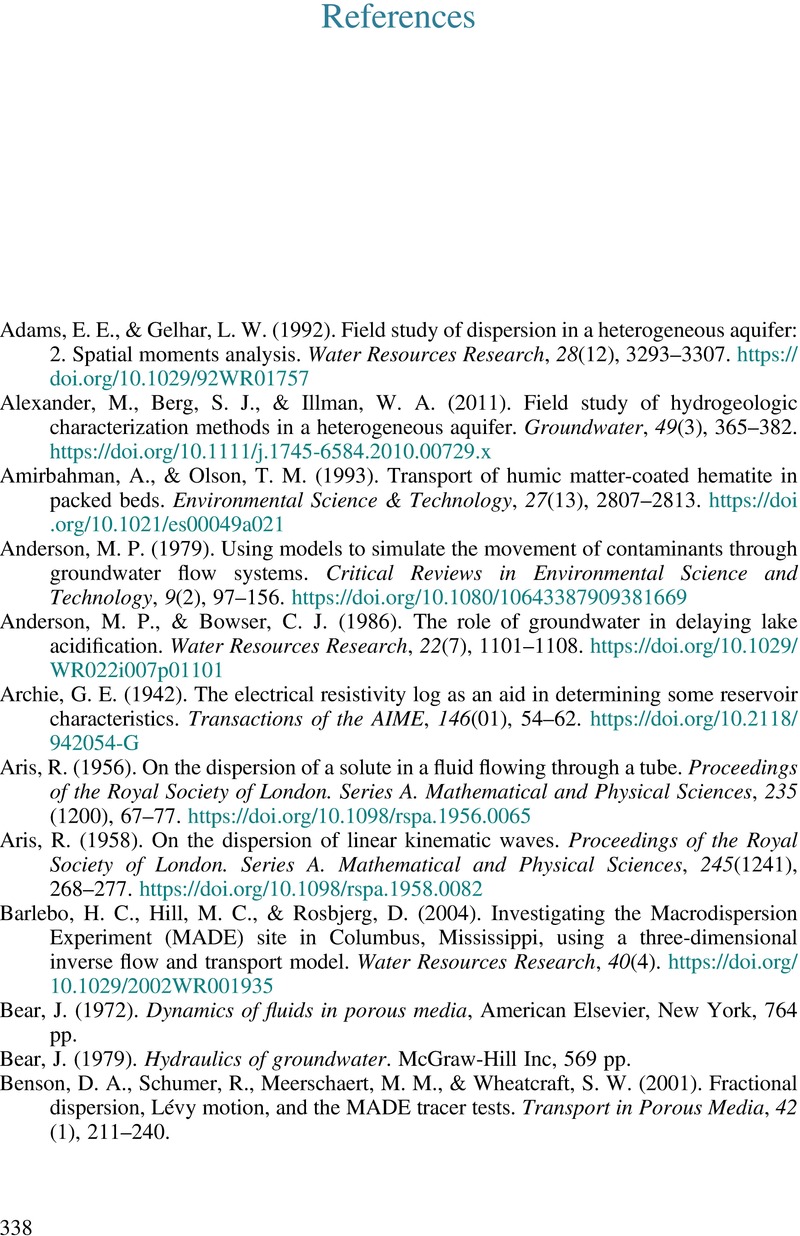Book contents
- An Introduction to Solute Transport in Heterogeneous Geologic Media
- An Introduction to Solute Transport in Heterogeneous Geologic Media
- Copyright page
- Contents
- Preface
- 1 Fundamental Concepts
- 2 Well-Mixed Models for Surface Water Quality Analysis
- 3 Well-Mixed Models for Subsurface Water Quality Analysis
- 4 Molecular Diffusion
- 5 Numerical Methods for Advection–Diffusion Equations
- 6 Shear Flow Dispersion
- 7 Solute Transport in Soil Columns
- 8 Parameter Estimation
- 9 Solute Transport in Field-Scale Aquifers
- 10 Field-Scale Solute Transport Experiments under Natural Gradient
- 11 Forced Gradient Field-Scale Tracer Experiments
- 12 High-Resolution Characterization (Tomographic Surveys)
- References
- Index
- References
References
Published online by Cambridge University Press: 02 February 2023
- An Introduction to Solute Transport in Heterogeneous Geologic Media
- An Introduction to Solute Transport in Heterogeneous Geologic Media
- Copyright page
- Contents
- Preface
- 1 Fundamental Concepts
- 2 Well-Mixed Models for Surface Water Quality Analysis
- 3 Well-Mixed Models for Subsurface Water Quality Analysis
- 4 Molecular Diffusion
- 5 Numerical Methods for Advection–Diffusion Equations
- 6 Shear Flow Dispersion
- 7 Solute Transport in Soil Columns
- 8 Parameter Estimation
- 9 Solute Transport in Field-Scale Aquifers
- 10 Field-Scale Solute Transport Experiments under Natural Gradient
- 11 Forced Gradient Field-Scale Tracer Experiments
- 12 High-Resolution Characterization (Tomographic Surveys)
- References
- Index
- References
Summary

- Type
- Chapter
- Information
- Publisher: Cambridge University PressPrint publication year: 2023

